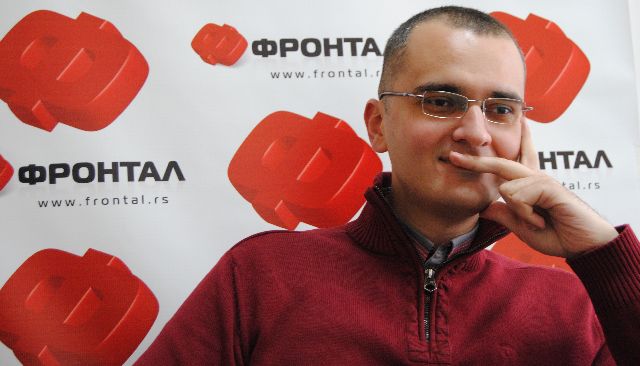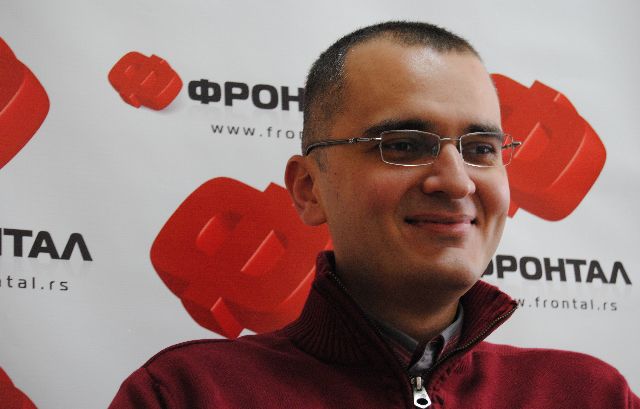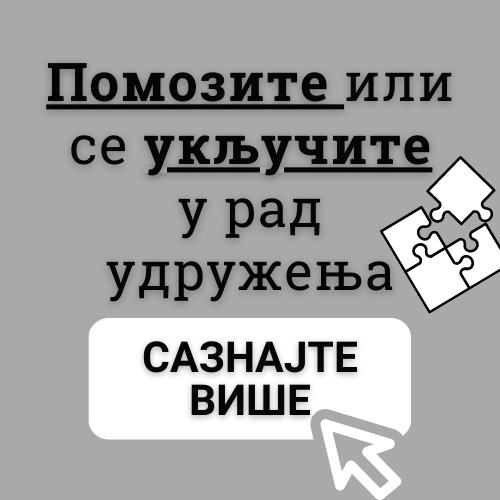
This region is so much buried in the past, that the past is actually its disease. And when you are ill, you call a doctor.
Frontal RS invited Goran
Latinović, MA of historical sciences, Senior Teaching Assistant at the History
Department of Banja Luka University and a PhD candidate at the High School of
Historical Sciences of the University of San Marino, to try and give us answers
to some questions from his area of study.
How much the history learned today from textbooks is based on facts, and
how much is it retouched myths used for daily or long-term politics in the
region?
This mainly depends on the author of a textbook and the competent authorities that issue permits for
textbooks to be used in the education system of an entity or the state. History
textbooks used in Republika Srpska and Serbia mostly reflect the factual
history, which is a result of serious scientific research.
The biggest discrepancies are connected to the Second World War and the issue whether we had one or two
liberation movements, as well as to the period from 1945 to 1991. There are
people, even at the top of our historical science, who have a hard time
accepting views of most historians, especially the younger generations, that
the communist regime was a negative period in our history and that it laid
foundations for the suffering we experienced in the last decade of 20th
century.
On the other hand, by
analysing history textbooks used in Croatia and the Federation of Bosnia and
Herzegovina, we can clearly see the political background of their origin. By
ignoring numerous historical sources and scientific facts, their authors
presented the past in a way that is very remote from the historical reality.
I will name one of the many
examples: according to authors of textbooks in Zagreb, Serbs living west from
the Drina River originate from the “Vlahs” and Croats who had to convert to
Orthodox Christianity, and according to authors of textbooks in Sarajevo, they
are in fact “Orthodox Bosniaks” who were made to believe they are Serbs in 19th
century.
How often do the authorities of Republika Srpska consult experts when
marking important events or conducting projects concerning history?
A generally accepted opinion
in the West is that a state striving for progress must constantly look behind
in order to use historical experience to determine a course and dynamics of the
current and future development of its people.
In such environments the position
of the historical science is becoming increasingly important, while here, on
requests and recommendations coming from those same environments, history is
reduced to a marginal subject in the educational system. Of course, we can see
here also the political background of such attempts. Unfortunately, this is
sometimes contributed by historians who have a negligent attitude towards
obvious problems and by that making those problems bigger.

Ten years ago the
Association of Historians was registered in Republika Srpska, but its
activities are secret for most historians. Instead of working publically, to
organise regular annual meetings and to represent historians’ interests before
the authorities, not many people know anything about this association, neither
who the President is, nor where are the head offices, nor what do they do.
In such conditions we should
not be surprised that the authorities of Republika Srpska, regardless of the
political option, seldom ask for advice and opinions from historians.
Serbian and Croatian historians always interpreted medieval Bosnia in a
different way. Now we have the third history. How can this be viewed
scientifically and without passion in such conditions?
Historical sources clearly
and unambiguously show that medieval Bosnia was a part of Serbia, which later
on continued as an independent state, without losing its Serbian identity.
Bosnian rulers called their subjects Serbs, spoke the Serbian language and
wrote in Cyrillic alphabet.
Its most important medieval ruler
was crowned as the King of Serbs, Bosnia, Coast and Western Lands. So it is
very indicative that the man mentioned only one ethnicity in his title, and
then the areas he ruled and where those people live. Only when he expanded his
state to the west, to those areas where a Croatian state existed before being
destroyed by the Hungarians in 1102, were there Croats in his state. From 14th
century there is a term “Bošnjani”, but it had a state and political meaning,
not ethnic or national.
So it was not a new people,
but an expression denoting subjects of the ruler of Bosnia, i.e. the people
living in his state, whether they were Serbs or some other people. When we say
“Vojvođani” we do not mean separate people, but Serbs, Hungarians and other
people who live in Vojvodina.
The wartime authorities in Srpska easily forgotten the fact that Stefan
Tvrtko I Kotromanjić was crowned in 1227 at the grave of Saint Sava as the King
of Serbs, Bosnia, Coast and Western Lands, which resulted in lilies being
removed from the Republika Srpska coat of arms. Do you have a comment?
I think they made a mistake.
King Tvrtko’s coat of arms should have been put on the Serbian tricolour before
the Muslims put it on their white flag. With it they should have put the
Nemanjić coat of arms, and on top of the both put the Karađorđević crown.
After all, King Tvrtko I was
related to Nemanjićs on his mother’s side and was a pretender to the Serbian
throne. We had really strong historical arguments in our hands, but it is
uncertain how much of it could have been achieved in the conditions of
unbelievable media demonization of the Serbs.
A similar historical
ignorant move was made with changing the name of the town of Foča. Instead
calling it “Srbinje”, they should have returned its old Serbian name “Hoča”, or
simply leave Foča. The change of “F” came after “H” was lost in the Serbian
language, a process that finished in most of Serbian dialects by 17th
century. “H” returned to the Serbian language only after the reform by Vuk
Stefanović Karadžić. For example, in Kosovo and Metohija, near Orahovac, there
is a Serbian enclave by the name of “Velika Hoča”.
You are working on your PhD dissertation on Yugoslav-Italian relations
between the two World Wars, and you spent almost a year in Rome and San Marino.
Could you give an assessment of historical relations between the Serbs and
Italians?
Relations between the Serbs
and the Italians changed during 19th and 20th century. At
first, the Italians looked favourably at the national unification movement of
the Serbs, which reminded them of their Risorgimento. However, due to efforts
of Serbia to liberate the Croats and the Slovenians, Serbian-Italian relations
became strained, almost hostile, although the two states were formal allies in
the First World War.
In the period between the
two World Wars, Italy was the most serious enemy of the Yugoslav state, not
only because of open territorial pretensions towards Dalmatia, but also because
of the fact that Yugoslavia was the main obstacle for its imperialistic
ambitions in the Balkans and the Danube valley.
Italy realized its strategic
goals during the Second World War, but just temporarily. Italy losing Istra,
Rijeka and Zadar, as well as the Trieste crisis, additionally strained
Yugoslav-Italian relations, which became more peaceful as late as 1975 with the
Treaty of Osimo.
Although the media
demonization of the Serbs in the last decade of 20th century was
also present in Italy, we should not forget that there were a few very
interesting books and documentary films in Italy, which were more objective and
unbiased about both wars (1991 – 1995 and 1999).

Recently, a very untypical documentary film was aired on the Alternative
Television (ATV) titled “The Myth of the Bogomils”. Is there any historical
basis to draw parallels between the standing tombstones (stećci), medieval
Bosnia and the nation proclaimed during the Fatherland War (so-called
“Bosniaks”)?
When the Austro-Hungarian
Empire occupied Bosnia and Herzegovina in 1878, it approached a very important
strategic goal – creating a new people, new identity, new consciousness –
“Bosniaks”. According to that project, all residents of BH, regardless of their
religion, were to be persuaded they were “Bosniaks”.
This policy was especially
predominant during the “High Representative” at the time, Benjamin Kallaj (1882
– 1903), who earlier had written in his book “The History of the Serbian
People” that Bosnia and Herzegovina were Serbian lands, and when he was named
the Administrator of the Country Government he banned his own book.
It was in this period they
introduced an ethno-political theory about Bogomils and the indigenous
population of Bosnia, who in a certain historical period converted to Islam,
and the stećci tombstones were to be one of the main characteristics of
material culture of that “people”. We need to stress that the term “stećak”
(singular of stećci) was introduced by scientific circles, while the local population
called those tombstones simply “mramori” or “mramorovi” (marble stones).
Such policy failed, because
it had not been based on historical facts and due to strong opposition by the
Serbian people. Although buried long time ago, this policy was brought back
from the rubbish of history and placed on the table of the Muslim leaders in
early 90-ties of the last century. However, after 1992 there have been two
factions of “Neo-Bosniakhood”.
The first one “Integral
Bosniakhood” according to which “Bosniaks” are all residents of BH, regardless
of their religion, and the second one “Muslim Bosniakhood”, according to which
only Muslims are “Bosniaks”.
Are there some scientific projects to review historical facts from the
creation of Republika Srpska until today?
They are mostly texts
dealing with historical and strategic bases of the creation of Republika
Srpska. We have two roots here in the spotlight:
1.
Serbian identity, which is
deeply rooted into the being and consciousness of the Serbian people,
especially the fact that the Serbs have been living in some parts of Republika
Srpska for much longer time than in some parts of Serbia, which is mistakenly
called the Motherland of the Serbian people, although it is just the older
sister of Republika Srpska, and
2.
The fear of “1941”, i.e. of
repeated genocide over the Serbian people they suffered in the Second World
War.
However, there is one very
serious project, with me as an associate, being conducted under the patronage
of the Republika Srpska Academy of Sciences and Arts. The project is the
“Encyclopaedia of Republika Srpska”, which is so far, without a doubt, the most
important scientific project in the history of Republika Srpska.
Could we say that the interpretation of history (ancient past) from
Sarajevo and Zagreb, and now even from Podgorica, is much more in service of
building national identities, than it is the case with the Serbian side?
One of the main indicators
of the condition of historiography of a people are history textbooks. Analysing
textbooks from Zagreb, Sarajevo and Podgorica we can easily see strong
ideological presence, while the textbooks from Belgrade and Banja Luka (East
Sarajevo) do not have that, for the simple reason because the Serbs have had
national identity for a long time and they draw their knowledge from reliable
sources.
A selective approach to
historical sources is one of the main characteristic of those authors who try to
“historically justify” the current state of affairs.
The First International Conference on the System of Ustasha Death Camps
Jadovno 1941 is being prepared. Besides the general national disgrace that it
is happening for the first time after 70 years, what is your view on that
project?
I personally participate in
the project and I can say that it is very commendable how Dr Dušan Bastašić
makes efforts in order for the truth on the Serbs killed in the Jadovno system
of Ustasha camps, whose bones cry to Heaven, to see the light of day and that
our and world public find out more about the torture sites where over 40,000
people were murdered.
It is especially important
that the heads of the Serbian Orthodox Church blessed this noble undertaking.
Do you think that the Serbian historical science misses one important
link with the Serbian community as the whole, the one usually called
“popularisation”?
Several years ago, one of
the organisations of the so-called “other Serbia”, basically a second league
Serbia, printed pamphlets titled “Serbia does not have the strength to fight
nationalism and populism” in which there was a harsh attack on all true values
of the Serbian people.
Our enemies and their
servants amongst our people wish to take away the immunity from the Serbs so
that they would easily succumb to “values” dominating the western world and
become a faceless mass of half-people. We will resist that, firstly through the
Church and what it teaches us. Also, we need to read the books written not for
a fee, but for the soul, by people “wise as snakes, and harmless as pigeons”.
By: Dani(j)el Simić
Goran Latinović related news:
Fondovi i zbirke Srpske pravoslavne crkve u
hrvatskim arhivima i muzejima
O hrvatskim udžbenicima istorije
Jedno svjedočanstvo o pokolju Srba u
Bijelom Potoku kod Banjaluke na Vaskrs 1942. godine
Dva izostavljena poglavlja iz knjige Magnum
crimen Viktora Novaka


